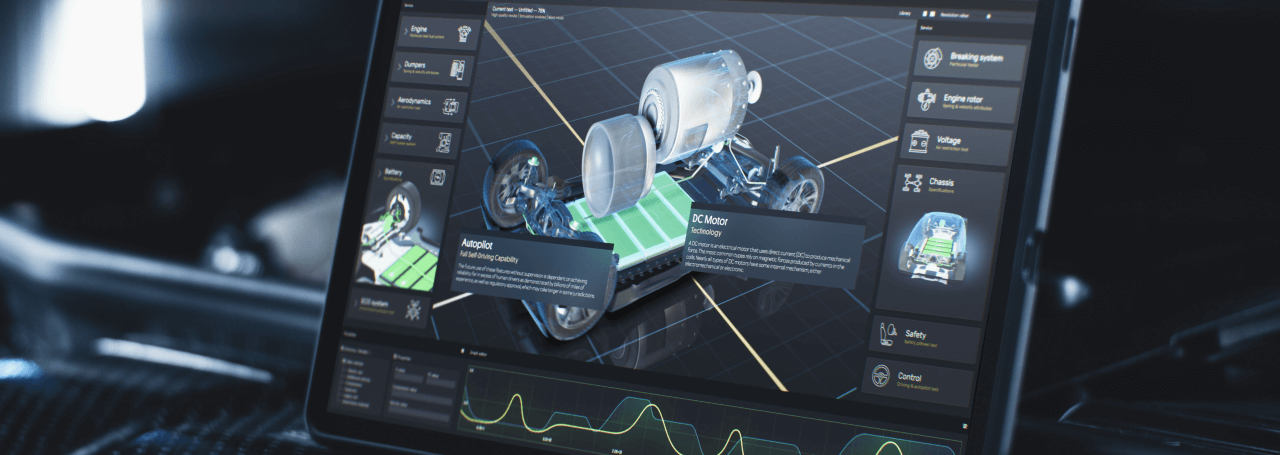- 1. The Emergence of Transparent OLED Display Technology
- 2. How Transparent OLED is Transforming the Display Industry
- 3. Key Features and Benefits of Transparent OLED Displays
- 4. The Role of Transparent OLED in Augmented Reality
- 5. Innovative Applications of Transparent OLED in Various Industries
- 6. Comparing Transparent OLED with Traditional Display Technologies
- 7. Future Prospects and Developments in Transparent OLED Technology
- 8. Challenges and Solutions in the Adoption of Transparent OLED Displays
- Frequently Asked Questions
- What makes Transparent OLED different from other display technologies?
- How does Transparent OLED contribute to the development of Augmented Reality?
- What are some of the innovative applications of Transparent OLED in various industries?
- What are the challenges in adopting Transparent OLED displays and how can they be addressed?
- What is the future of Transparent OLED technology?
In the rapidly evolving world of display technology, a groundbreaking innovation is poised to redefine our visual experience – Transparent OLED. This revolutionary technology, with its unique features and benefits, is set to transform the display industry, making traditional display technologies seem obsolete. This article will delve into the emergence of Transparent OLED, its transformative impact on the display industry, and its potential to redefine augmented reality experiences. We will also explore its innovative applications across various industries, compare it with traditional display technologies, and discuss the future prospects and developments in this exciting field. However, like any emerging technology, Transparent OLED also faces certain challenges in its adoption, which we will address along with potential solutions. Join us as we embark on this fascinating journey into the world of Transparent OLED, a technology that promises to revolutionize the way we see the world.
1. The Emergence of Transparent OLED Display Technology
The transparent OLED (Organic Light Emitting Diodes) display technology has emerged as a game-changer in the digital world, offering a new level of interaction and information display. This innovative technology, still undefined in its full potential, is revolutionizing the way we perceive and use screens. It is not just about the transparency, but also about the flexibility, efficiency, and the superior image quality it offers. The advent of transparent OLED technology has opened up a plethora of opportunities for various industries, from retail and automotive to architecture and design, paving the way for a future where displays could be integrated seamlessly into our surroundings.
2. How Transparent OLED is Transforming the Display Industry
As a groundbreaking innovation, Transparent OLED is reshaping the landscape of the display industry. This technology is not only enhancing the visual experience but also paving the way for new opportunities in various sectors. From retail to automotive, Transparent OLED is enabling businesses to deliver immersive and interactive experiences like never before.
There are several ways in which Transparent OLED is revolutionizing the display industry.
- Improved Visual Experience: Transparent OLED displays offer high contrast ratios, vibrant colors, and wide viewing angles, providing an unparalleled visual experience.
- Greater Flexibility: Unlike traditional displays, Transparent OLED screens can be curved, bent, or rolled up, offering greater design flexibility.
- Increased Interactivity: With the ability to display information on both sides, Transparent OLED screens can enhance interactivity and engagement.
Furthermore, the adoption of Transparent OLED technology is expected to accelerate in the coming years. This is largely due to the increasing demand for innovative display solutions in various sectors, including retail, automotive, and consumer electronics. As a result, the display industry is set to witness significant transformation, with Transparent OLED at the forefront of this change.
3. Key Features and Benefits of Transparent OLED Displays
Delving into the world of display technology, one cannot overlook the transformative potential of Transparent OLED Displays. These innovative screens offer a host of features and benefits that are redefining the way we interact with digital media. One of the most striking features is the high transparency that allows for clear and unobstructed viewing, even when the display is turned off. This feature, coupled with the high contrast ratio and wide viewing angle, provides an unparalleled viewing experience. Furthermore, the flexibility of these displays opens up new avenues for creative design and application. The undefined boundaries of these screens allow for seamless integration into various environments, making them a versatile choice for a range of applications. In addition, the low power consumption and long lifespan of Transparent OLED Displays make them an environmentally friendly and cost-effective solution.
4. The Role of Transparent OLED in Augmented Reality
Augmented Reality (AR) is a technology that overlays digital information on the real world, and Transparent OLED plays a pivotal role in enhancing this experience. With its ability to display vibrant colors and deep blacks while maintaining transparency, Transparent OLED provides a more immersive and realistic AR experience. This is particularly beneficial in applications such as heads-up displays in automobiles or smart glasses, where information needs to be displayed without obstructing the user’s view.
Let’s consider the following ways in which Transparent OLED is revolutionizing AR:
- Improved Visual Quality: Transparent OLED displays offer superior visual quality, with high contrast ratios and wide color gamuts. This results in more realistic and immersive AR experiences.
- Greater Transparency: Unlike traditional displays, Transparent OLED displays can maintain up to 40% transparency when not in use. This allows for seamless integration of digital and physical worlds in AR applications.
- Flexibility: Transparent OLED displays are thin and flexible, allowing them to be integrated into a variety of form factors. This opens up new possibilities for innovative AR devices and applications.
Looking ahead, Transparent OLED technology is set to play an increasingly important role in the AR industry. As the technology continues to evolve, we can expect to see even more innovative applications that blend the digital and physical worlds in ways we can only imagine today. This is not just a trend, but a significant step forward in the way we interact with technology and the world around us.
5. Innovative Applications of Transparent OLED in Various Industries
With the advent of Transparent OLED technology, a myriad of industries are witnessing a transformative shift in their operations and offerings. The retail sector, for instance, is leveraging this cutting-edge technology to create interactive and engaging displays, enhancing the overall customer experience. Similarly, the automotive industry is integrating Transparent OLEDs into windshields and windows, thereby offering a more immersive and interactive driving experience. However, the implementation of this technology comes with its own set of challenges. The high cost of production and the need for specialized skills for installation and maintenance are some of the significant drawbacks.
On the other hand, the entertainment and media industry is utilizing Transparent OLED to create visually stunning and immersive experiences for viewers. This technology is also making waves in the healthcare sector, where it’s being used to develop advanced diagnostic tools and medical devices. Despite the potential drawbacks, the benefits of Transparent OLED, such as its flexibility, transparency, and high contrast ratio, far outweigh the cons. The technology’s ability to provide clear and vibrant displays even in bright light conditions is a game-changer, paving the way for innovative applications across various industries.
6. Comparing Transparent OLED with Traditional Display Technologies
When it comes to display technology, Transparent OLED stands out for its unique features and superior performance. Unlike traditional display technologies such as LCD and LED, Transparent OLED offers a higher contrast ratio, better color accuracy, and faster refresh rates. This results in a more vibrant and realistic image quality that enhances the viewing experience.
Let’s delve into a comparison of these technologies:
- Contrast Ratio: Transparent OLED displays have an infinite contrast ratio, meaning they can display deep black levels. This is a significant advantage over LCDs, which can only achieve a contrast ratio of around 1,400:1.
- Color Accuracy: Transparent OLED displays can reproduce a wider color gamut than LCDs and LEDs. This means they can display more colors, resulting in more accurate and vibrant images.
- Refresh Rate: Transparent OLED displays have faster refresh rates than traditional displays. This means they can display fast-moving content with less motion blur.
Furthermore, Transparent OLED technology has the unique ability to be transparent when not in use, providing a futuristic look and feel that is not possible with traditional display technologies. This transparency feature, combined with the superior image quality, makes Transparent OLED a revolutionary advancement in the field of display technology.
7. Future Prospects and Developments in Transparent OLED Technology
Looking ahead, Transparent OLED technology is poised to redefine the landscape of display technology. It is anticipated to play a significant role in various sectors, including automotive, retail, and architectural applications. The technology’s ability to offer clear, vibrant displays while maintaining transparency when not in use provides a unique blend of functionality and aesthetics. However, it’s worth noting that the technology is still in its nascent stages and faces challenges such as high production costs and durability issues. These obstacles need to be addressed for the technology to reach its full potential.
On the brighter side, advancements in research and development are expected to overcome these challenges. For instance, the introduction of flexible Transparent OLEDs is a promising development that could open up new avenues for application. Furthermore, the integration of this technology with Augmented Reality (AR) and Virtual Reality (VR) systems could revolutionize the user experience in gaming, education, and entertainment sectors. However, the potential for privacy concerns due to the transparent nature of these displays is a downside that needs careful consideration. In conclusion, while Transparent OLED technology holds immense potential, its future success will largely depend on how effectively its challenges are addressed.
8. Challenges and Solutions in the Adoption of Transparent OLED Displays
Despite the numerous advantages of transparent OLED displays, there are still significant challenges that need to be addressed. One of the main obstacles is the high cost of production. The manufacturing process of these displays is complex and requires a high level of precision, leading to increased costs. Furthermore, the materials used in the production of OLEDs are expensive, further driving up the cost. However, as technology advances and economies of scale are achieved, these costs are expected to decrease significantly.
Another challenge is the relatively short lifespan of OLED displays compared to other types of displays. This is primarily due to the organic materials used in OLEDs, which degrade over time. However, researchers are continuously working on improving the durability and longevity of these displays. Advancements in material science and manufacturing techniques are expected to lead to more durable and long-lasting OLED displays in the future.
Despite these challenges, the adoption of transparent OLED displays is on the rise. This is largely due to their superior performance and unique features, such as transparency and flexibility. To facilitate this adoption, a checklist for potential adopters could include: understanding the capabilities and limitations of the technology, assessing the cost-effectiveness, considering the lifespan of the display, and staying updated with the latest advancements in the field. With the right approach and continuous innovation, transparent OLED displays have the potential to revolutionize display technology.
Frequently Asked Questions
What makes Transparent OLED different from other display technologies?
Transparent OLED, unlike other display technologies, is capable of displaying vibrant images and videos while maintaining a high level of transparency. This means that even when the display is turned on, you can still see through it. This unique feature opens up a whole new world of possibilities for display applications.
How does Transparent OLED contribute to the development of Augmented Reality?
Transparent OLED plays a crucial role in the development of Augmented Reality (AR) by providing a display that can overlay digital information onto the real world. With its high transparency and vibrant display, Transparent OLED can create a more immersive and realistic AR experience.
What are some of the innovative applications of Transparent OLED in various industries?
Transparent OLED has a wide range of applications across various industries. In retail, it can be used for interactive product displays and digital signage. In automotive, it can be used for heads-up displays that provide real-time information without distracting the driver. In architecture, it can be used for smart windows that can display information or change opacity for privacy.
What are the challenges in adopting Transparent OLED displays and how can they be addressed?
One of the main challenges in adopting Transparent OLED displays is their high cost compared to traditional displays. However, as the technology matures and production scales up, the cost is expected to come down. Another challenge is the durability of the displays, but advancements in materials and manufacturing processes are expected to improve the longevity of Transparent OLED displays.
What is the future of Transparent OLED technology?
The future of Transparent OLED technology looks promising with continuous advancements in technology and growing adoption across various industries. With its unique features and capabilities, Transparent OLED is expected to revolutionize the display industry and open up new possibilities for interactive and immersive experiences.
DISCOVER OUR
Whitepaper
Achieve the perfect user-display interaction with the right Touch Sensor IC. Ever faced issues with phantom touch events or certification? Boost your R&D like a pro with our Whitepaper!



